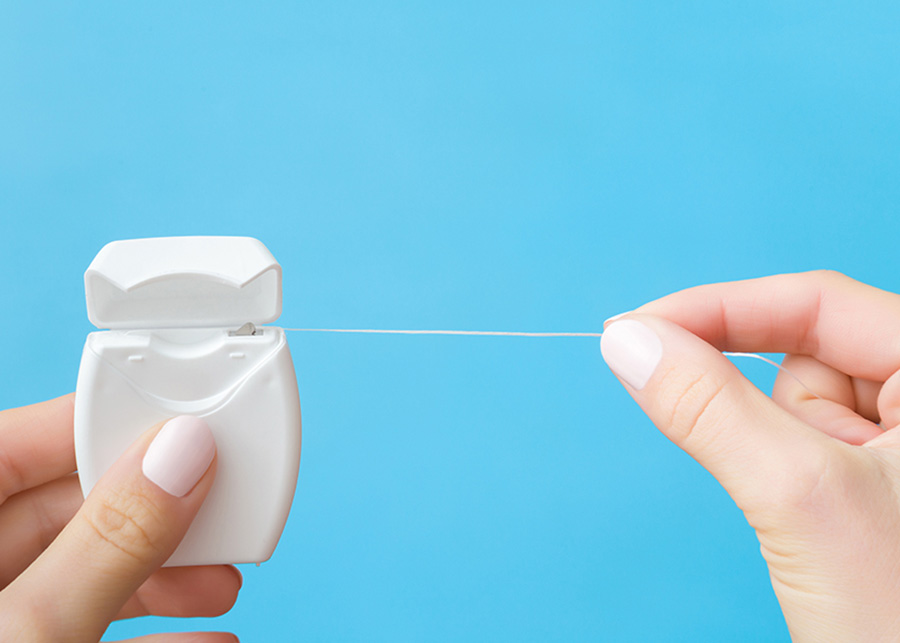
Understanding the Basics of Flossing
 If you aren’t doing so already, it’s time to pick up the floss and show your smile some extra love. Our Canton, MI, dentists are aware that many patients don’t like flossing but it’s a great way to reach and get rid of the plaque in between teeth. Flossing every day can also limit how much your gums bleed at your dental checkups.
If you aren’t doing so already, it’s time to pick up the floss and show your smile some extra love. Our Canton, MI, dentists are aware that many patients don’t like flossing but it’s a great way to reach and get rid of the plaque in between teeth. Flossing every day can also limit how much your gums bleed at your dental checkups.
Here’s what you need to know when it comes to .
Why It’s Important to Prioritize Flossing
Many patients understand the importance of brushing your teeth but they neglect to also embrace the act of flossing. In fact, it’s estimated that about only 4 in 10 Americans floss every day. It is recommended that if you’re brushing at least twice a day, that you’re also flossing at least once.
Read More → 7 Ways to Protect Against Gum Disease
So, why does using floss matter? Well, flossing helps to clean out and remove any food particles that become stuck in between your teeth. This then reduces how much bacteria and plaque form in, around, and on your teeth. In a nutshell, flossing is a beneficial oral hygiene habit that lowers your risk for developing cavities and the need for gum disease treatment.
Is There a Correct Way to Floss?
is nothing complicated. However, most people think they’re using floss correctly when in fact, they’re going too fast, being too rough, or missing spots. If done improperly, you can potentially damage your teeth and gums. No one wants to experience a dental emergency during their daily oral care routine.
To make it easier, we’ve included a step-by-step guide below that you can follow once a day. If you still have questions, don’t hesitate to ask our dentists or staff for guidance at your next professional teeth cleaning appointment.
For the most efficient flossing experience, try:
- Tearing off about 18-24 inches of floss.
- Wrapping most of the floss around both of your middle fingers, leaving about 1-2 inches for use on your teeth.
- Using your thumbs and index fingers to tightly hold the floss and place it between two teeth.
- Carefully and gently moving the floss up and down to rub it against both sides of each tooth. Try not to glide the floss into your gums as this can cause scratching and bruising.
- Curving the floss into a “C” shape once it reaches your gums so it hugs the base of your tooth. By doing this, you’re allowing the floss to enter the space between your gums and tooth.
- Repeat the above steps until you’ve finished flossing between every tooth (even behind your back molars!) and use a clean section of floss as you go.
How You Can Pick the “Right” Floss
It is generally recommended that you floss first, then brush your teeth. But what type of floss should you use? There are 3 main types of floss to choose from and that includes standard floss, dental tape, and floss threaders.
As far as the 3 types of floss go, simply pick a quality product that feels the best. Dental tape is broader and flatter which is great if you have braces or larger gaps in between your teeth. Regular floss comes in waxed or woven versions and is a thin nylon strand. Waxed floss easily glides in between teeth while woven is thicker and a bit softer. Some may notice woven floss getting stuck where there are tight spaces, so waxed might be a safer bet.
Lastly, floss threaders can benefit patients with braces, dental bridges, and gaps. There are multiple components to a floss threader which includes:
- A stiffer end for making flossing underneath appliances easier
- Floss that’s spongy for cleaning around appliances, i.e., brackets and wires
- Regular floss for removing plaque underneath your gum line
What Else Can I Use to Floss?
Can’t get the hang of flossing or find it difficult due to arthritis or limited hand mobility? There are a few other tools you can use to get rid of plaque and leftover food bits. We’re mainly talking about water flossers and floss picks.
Electric are more on the expensive side but they’re great for patients who have trouble with standard floss or want something more powerful. Water flossers use water and pressure to rinse away plaque and debris between teeth. This tool is also nice if you have braces! If you’re willing to invest, our dentists highly recommend a water flosser.
Floss picks, on the other hand, can be bought in bulk and are disposable after one full use. You can move them around your smile easily and have better luck reaching areas in the back of your mouth.
Give Our Office a Call
If you want to remove more plaque and have your gums bleed less at your next cleaning with our , it’s time to pick up the floss and get to work. Your smile will thank you! Call Hometown Dental today at (734) 667-4941 or contact us online to schedule an appointment.
This blog post has been updated.

